It’s important to learn how to sound treat a home studio. In this piece, we’re going to look at home studios. However, the ideas mentioned here will apply to any mixing space, and we will look at some larger and more complex approaches in later articles.
Optimising The Sound In A Home Studio
When it comes to discussing a bedroom or home studio more often than not this will be a single room that takes on more than one function. For example, it may only be a ‘studio space’ some of the time. This also implies that it may not be as adaptable, or open to customisation as a dedicated space.
Here we’ll consider the home studio in three ways – as a headphone only mixing space, as a speaker-based mixing space, and one where you might need to record sound sources with a single mic (such as vocals or acoustic guitar).
When using headphones the quality of audio that you hear will be primarily determined by the specification of the headphones that you are using. Notwithstanding the various open/closed design approaches (which also affect how much sound escapes into the room), one important measure of this is their frequency response.
In other words, the lowest and highest frequencies that they can playback, and the accuracy of all the frequencies in between. When we talk about accuracy one important measure of this is how flat the frequency response might be. In other words, ensuring that any given frequency in a mix is not played back louder or quieter than it should be.
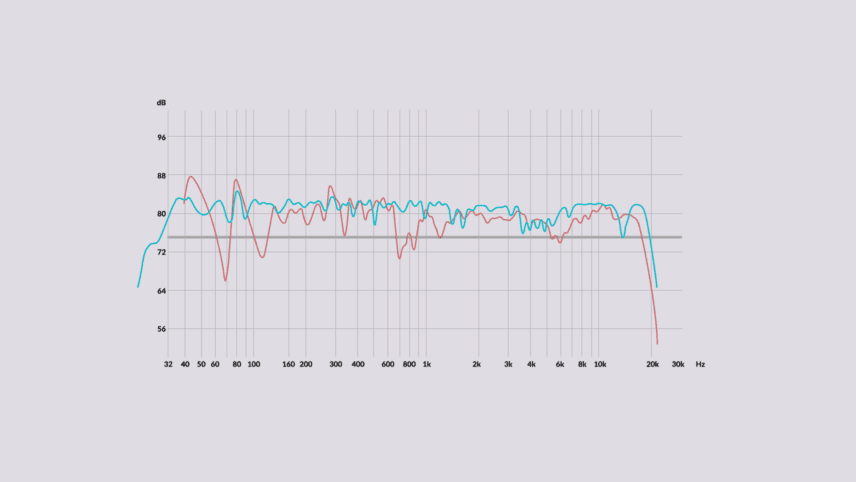
If our playback system has an uneven frequency response then it means that we might compensate for its deficiencies when mixing. For example, if we are using headphones that have a pounced boost at 100-200Hz, the temptation will be to use EQ to lessen this in the mix, and subsequently find that this area is missing on playback with other systems. For this reason, headphones with a relatively flat (and ultimately unflattering) frequency response are far better when attempting to deliver mixes that translate well to as many other systems as possible.
Headphones vs Monitors
Headphones are not the same as monitors in one important respect. They generally do not interact with the room that you’re in. When needing to simultaneously record a mic source and listen to a backing track, this is a good thing – and there are occasions when headphones allow you to hear things in a mix that you might miss more easily when using monitors.
Headphones can be somewhat soulless when trying to create a vibe when writing, and some find that having music in the room, and inhabiting the space, far more conducive to creativity (and essential if you’re working with someone else!) – they may also contribute to the creation of narrow, less spacious mixes.
However, monitors can open a real Pandora’s box when it comes to fidelity and accuracy, though an understanding of the potential issues will allow you to get the best of the equipment at your disposal.
The most important concept to be aware of when employing monitor speakers in a room is that it is not just the specification of the speakers that determines the overall quality of what you hear. Rather, it is a function of the monitors and the room (including where the monitors are placed and where you’re sitting in relation to them). This means that even if you change your monitors for ones with a much better apparent specification a host of these other the factors will still come into play.
Directing The Sound In A Home Studio
Whatever monitors you use the most important thing is to deliver the sound to your ears in as direct a fashion as possible, as the sound waves travelling the most direct route will be those least affected by other acoustic factors.
In a bedroom studio, the size and the shape of the room as well as the proximity of the monitoring and listening to walls ceilings floors (and what these are constructed from or covered with) will all have a bearing on the accuracy (or otherwise) of what you hear.
Sound waves reflected from hard and flat surfaces present the most problems as these are mixed with the direct signal from your monitors as they are bounced off the various surfaces, with their interaction leading to peaks and troughs in the perceived frequency response.
At mid and high frequencies these tend to be bunched quite closely, and problematic reflections will mostly be presented as a smearing of transients (the fast-moving attack portion of a sound), due to the staggered arrival of direct and reflected signals at your ears.
As we progress to lower frequencies the issue tends to become one confined to the frequency realm, leaving areas where frequencies are either too loud or much quieter than they should be. Both of these issues can be addressed initially by appropriate monitor placement. Once this has been considered then various forms of acoustic treatment might also be considered.
A good way to approach monitor placement is to maintain symmetry in relation to the two monitor speakers and the room, and between the listener and the speakers. Additional consideration should also be made to their angle and height, as well as the proximity of the speakers to walls and corners.
Compared to the monitor alone in a large space, moving speakers near to walls causes a change to the frequency response, usually some form of bass boost. Monitor manufacturers usually provide details of suggested minimum proximity, and many active monitors have EQ switches on the rear for partially compensating for this.
In a bedroom doors, cupboards, and windows will also present their own problems, so some experimentation and an element of compromise will inevitably be required.
Examples of Good And Bad Speaker Positions
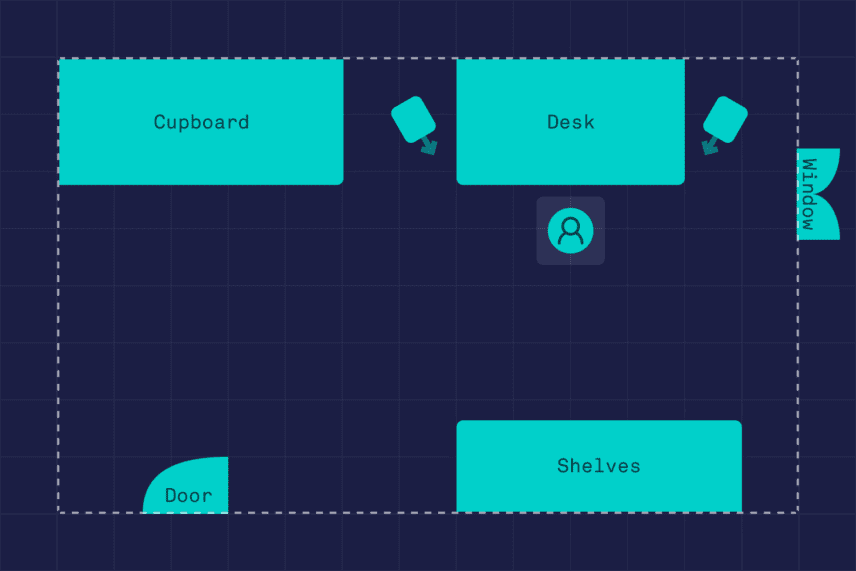
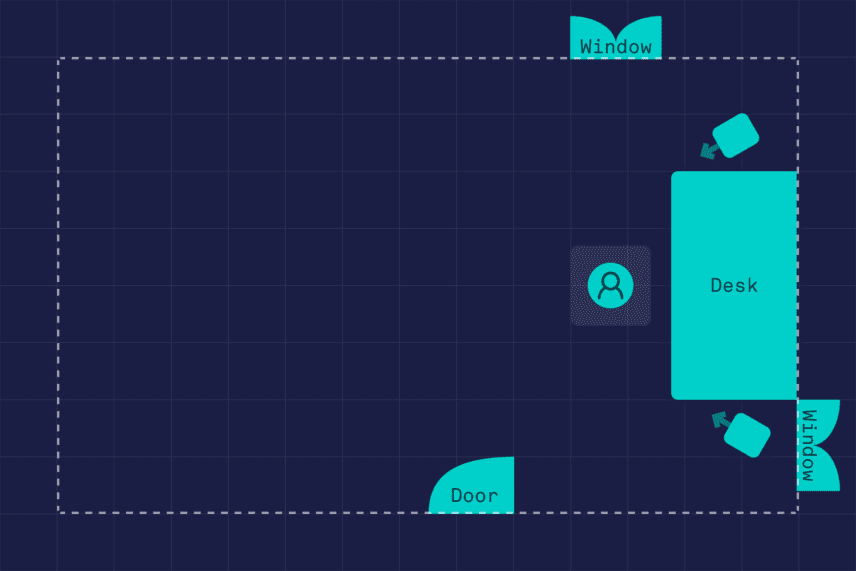
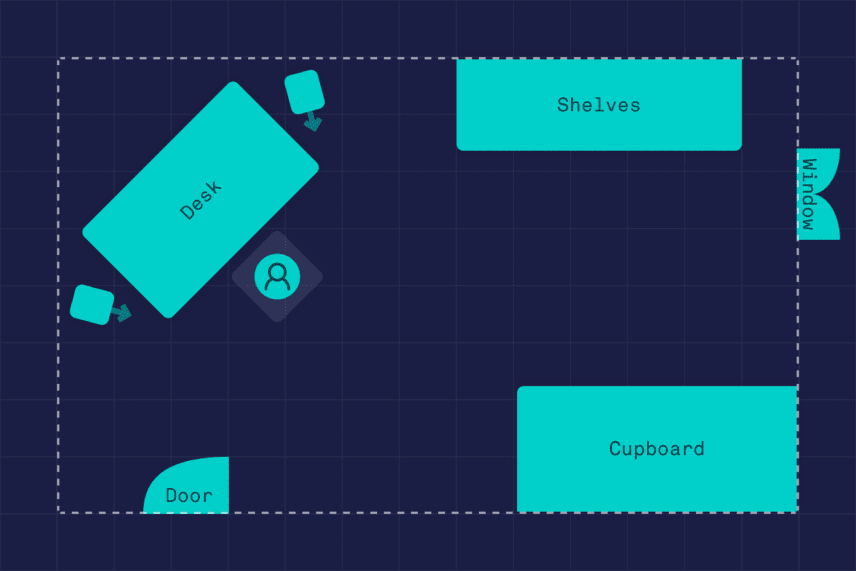
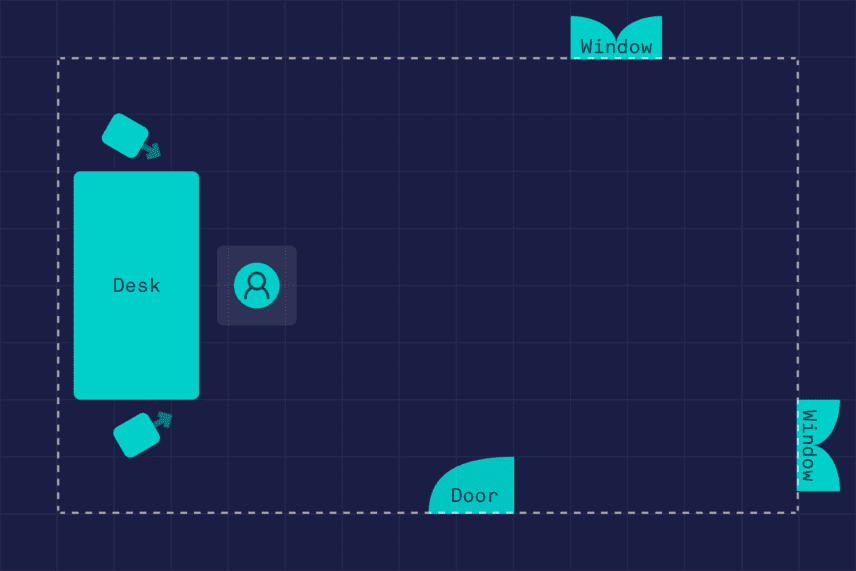
It is important to note also that the monitors should be at ear height and angled toward the relevant ear when sitting in your normal working position.
How to Get The Correct Monitor Height
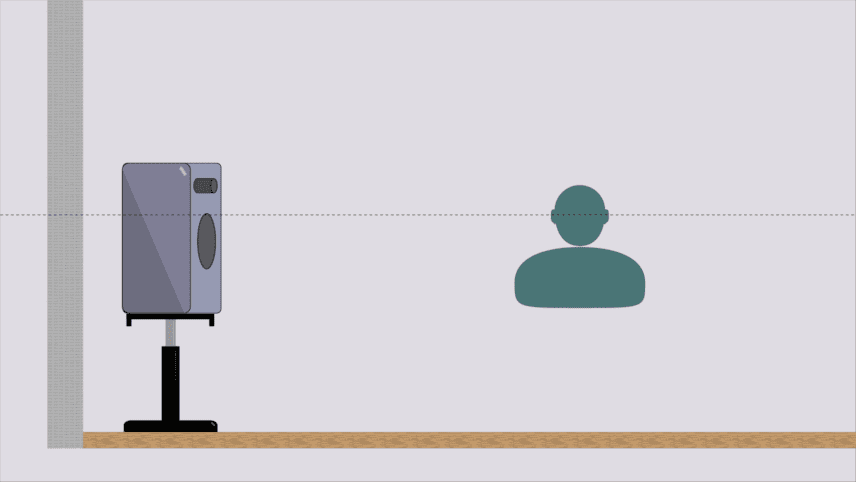
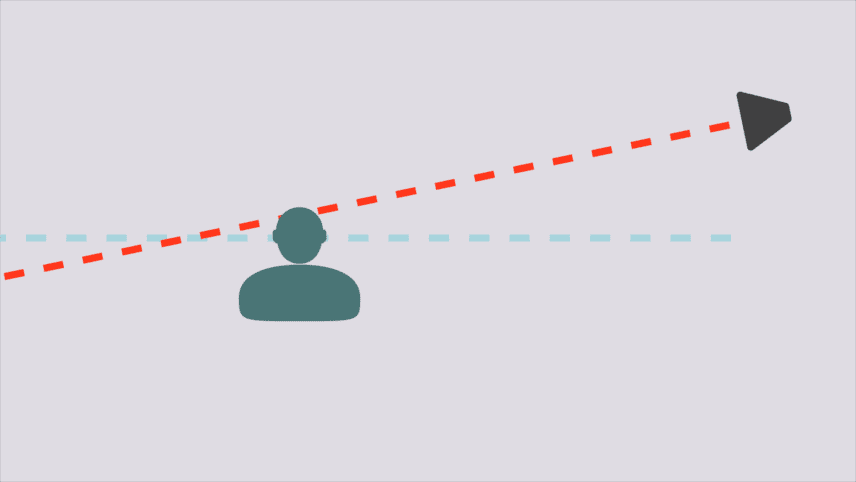
Ideally, they will also be placed on the solid immovable floor or desk-based stands. If your desk is wobbly, it might be time to improve or upgrade it.
How To Get The Correct Monitor Distance
Ensuring that the monitors are firmly placed on the stands or desk is often aided by the use of Improving the monitor isolation mounts (commonly made of rubber or foam).
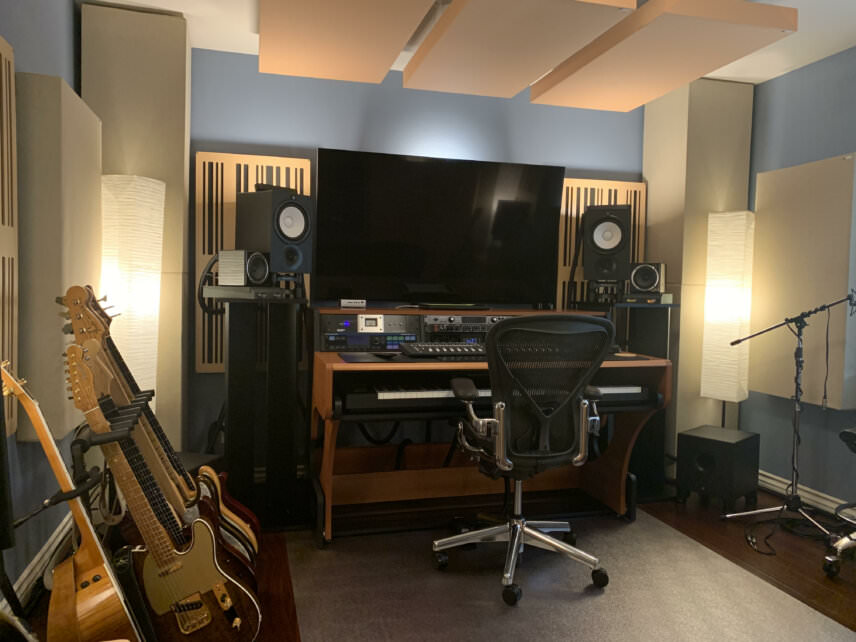
The distance between monitors in a bedroom or home studio will largely be determined by the desk size, but placing speakers too far apart should be avoided, as this will make panning and positional choices harder when mixing.
Being closer to the monitors also increases the ratio of direct to reflected sound, which is, in turn, improves the perceived sound in this type of space.

Further improvement can be made by considering acoustic treatment. This tends to take two forms – absorption or diffusion.
Absorptive materials decrease the amount of reflected sound energy bounced back into the room, whilst diffusion aims to scatter the energy more evenly.
Absorptive materials like open cell foam or mineral loaded wool are commonly used as the first line of acoustic treatment in home-based studios as they tend to be affordable and flexible in comparison to diffusers and can deliver noticeable improvements quickly and easily.
A good first place to start is to tackle reflections from the side wall.
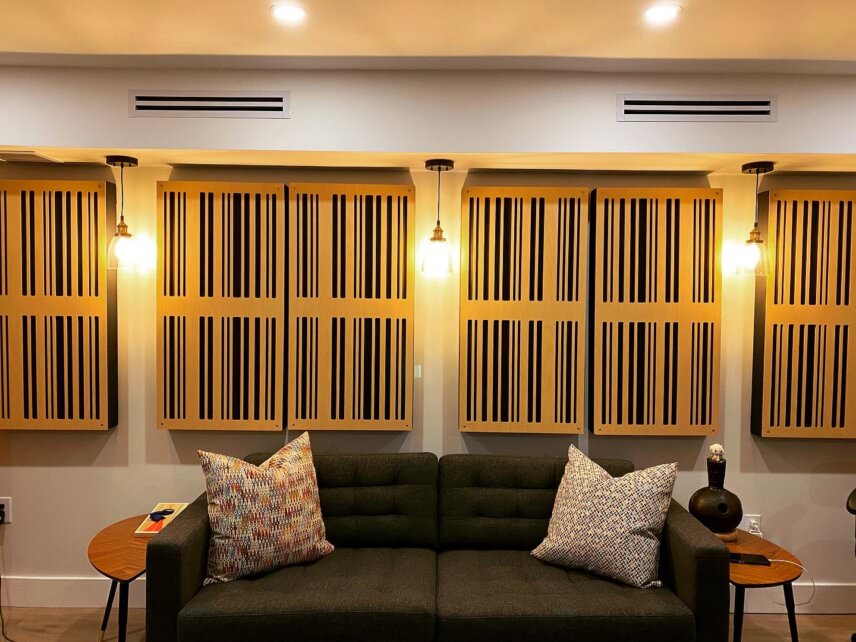
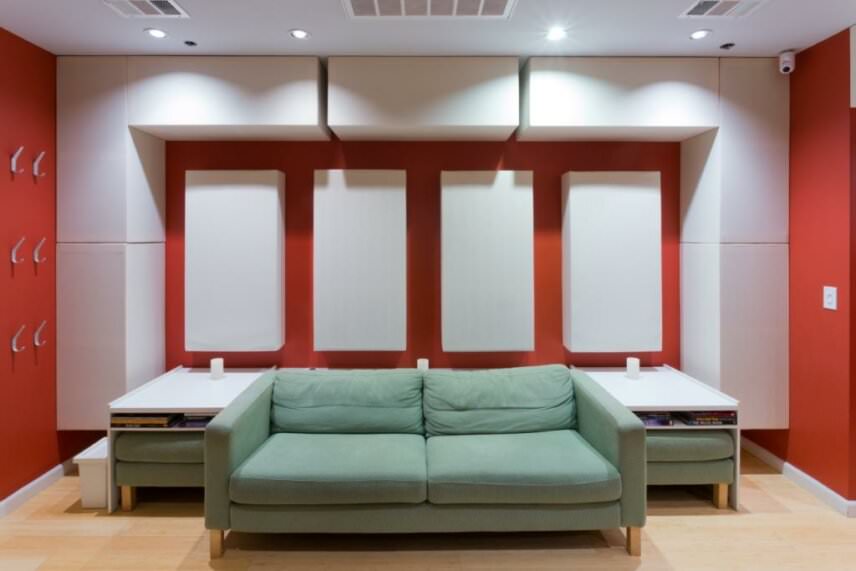
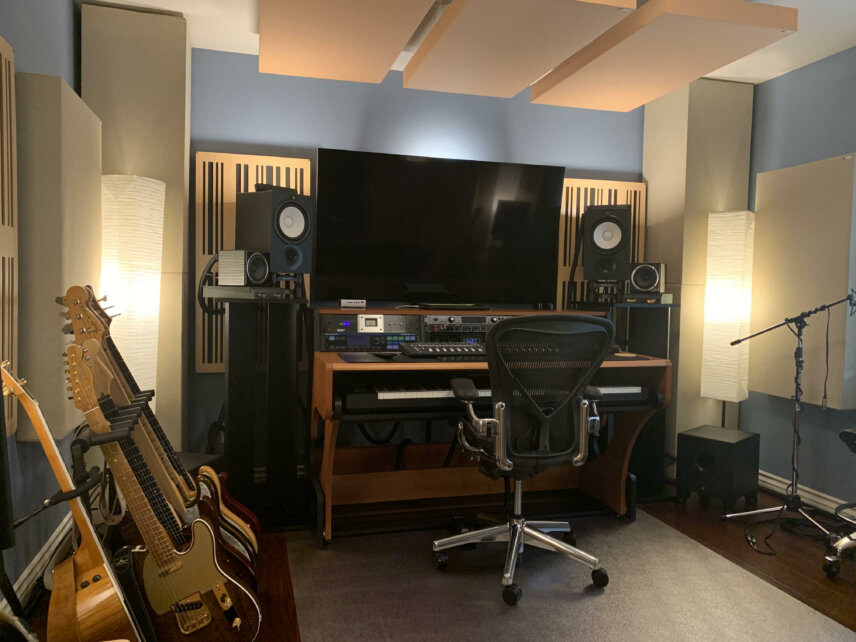
As with monitor placement, try and apply absorption in a symmetrical fashion. However, it is windows that will likely prove the biggest issue, as they provide a nice immovable reflective surface that defies easy treatment.
A word of caution though – absorptive treatment works progressively better the higher the audio frequency, meaning that low-mid and bass areas of the spectrum are much harder to address.
Improving absorption at low frequencies requires a much greater thickness of the material or placing it a great distance from the wall/ceiling, both problematic in small or multi-use spaces. This can be partially addressed by employing large absorptive corner/bass traps, but achieving a flat frequency response across the full frequency range will usually require a complex approach to both design and treatment.
In this instance, the smaller monitors with limited bass extension found in many bedroom studios might actually be a good thing.
It is also worth noting that beds, duvets, curtains and the soft-furnishings will all provide a degree of absorption, and any non-flat surface increases diffusion (meaning a ramshackle and cluttered space, might well sound better than a clean and empty one!).
Factors, such as room dimensions and wall and floor construction as well as more complex forms of treatment, and more detail on how effective each one might be, will be addressed in later articles. However, with a little thought and planning and a modest outlay, it is clear to see how some simple changes can optimise even the most modest of spaces.
This content is supported by GIK Acoustics. If you want to read more about content funding on Attack Magazine and how we can continue to provide content to you for free, visit our content funding page for a breakdown of our editorial policy.
*Attack Magazine is supported by its audience. When you purchase through links on our site, we may earn an affiliate commission. Learn more.
